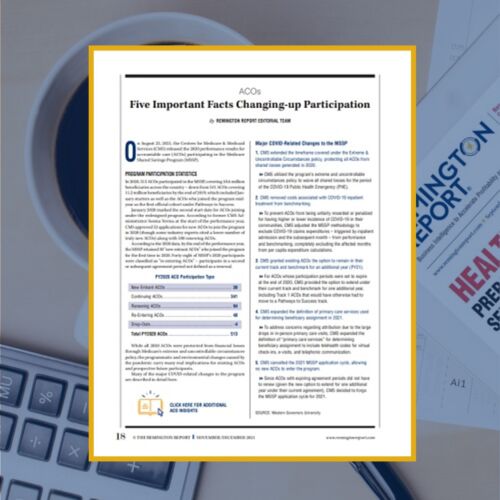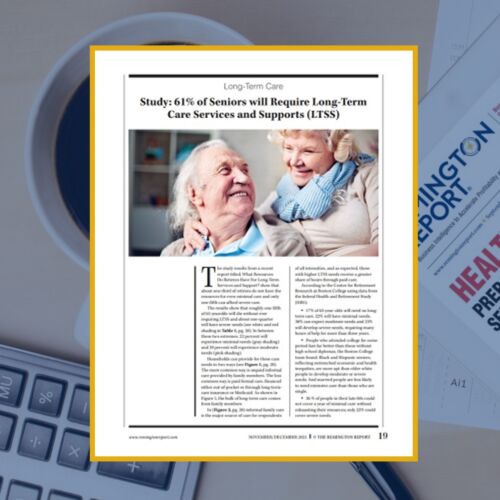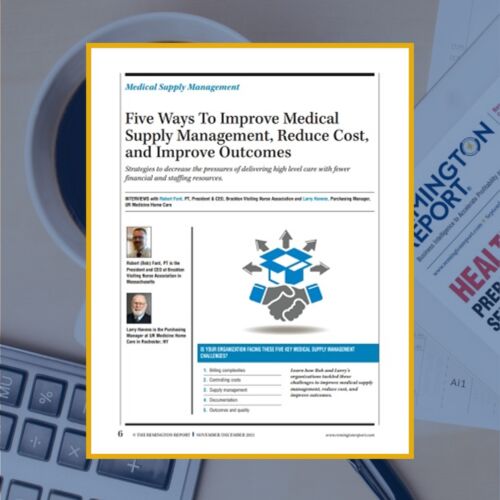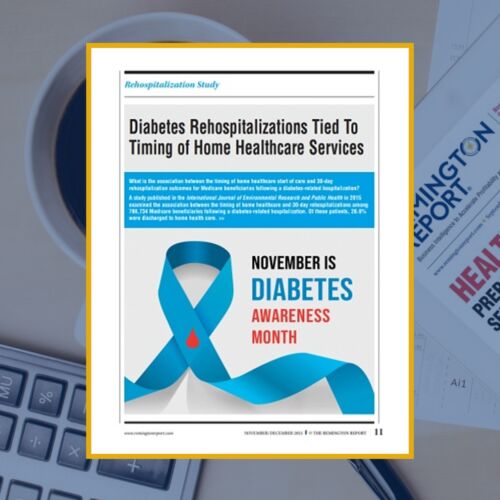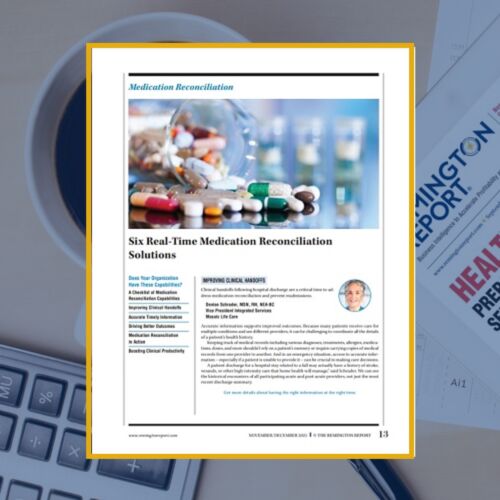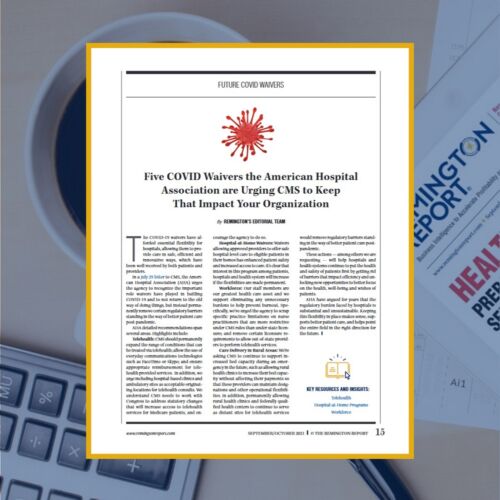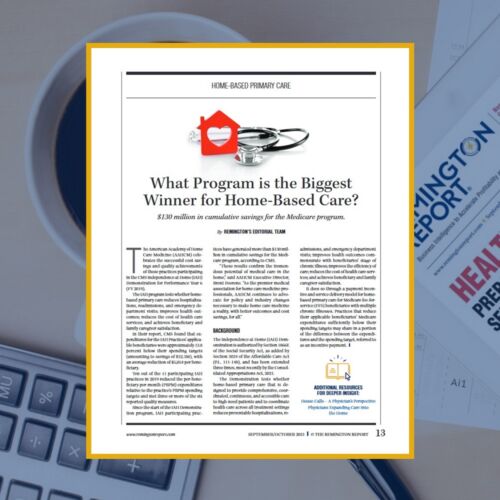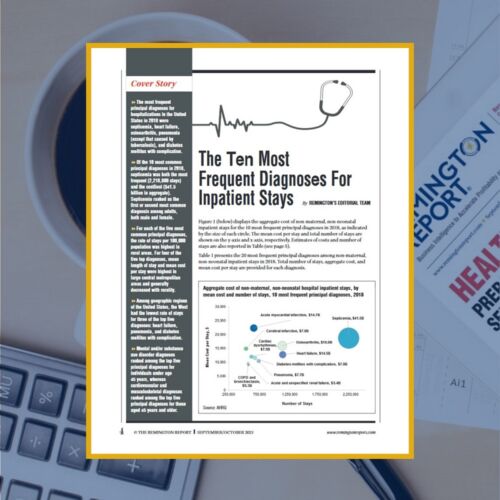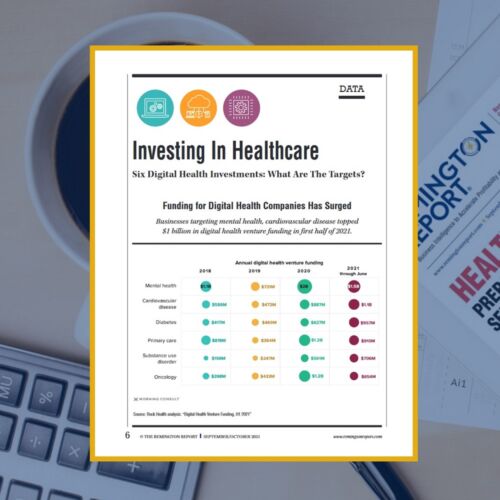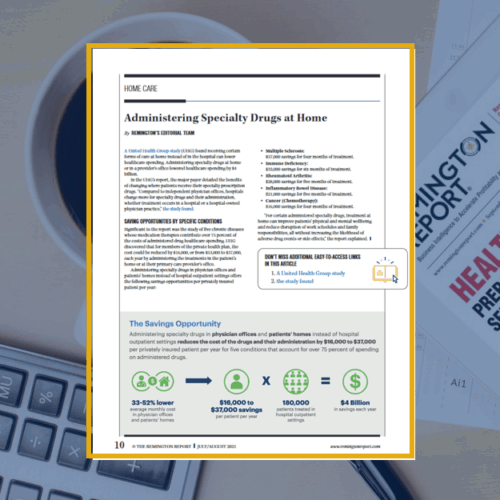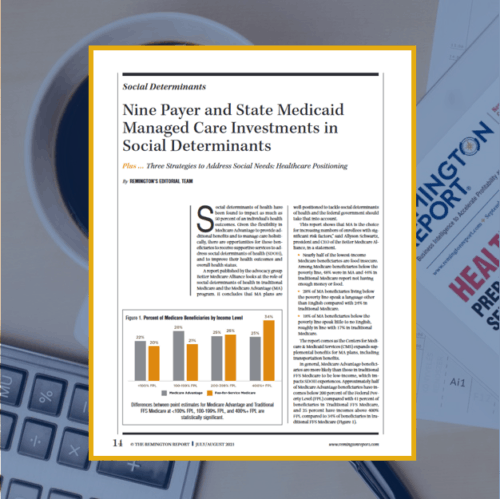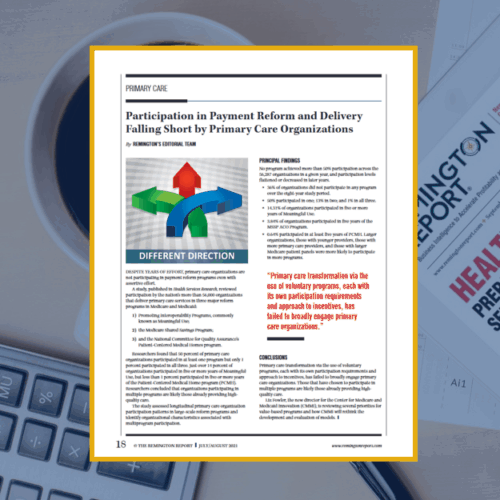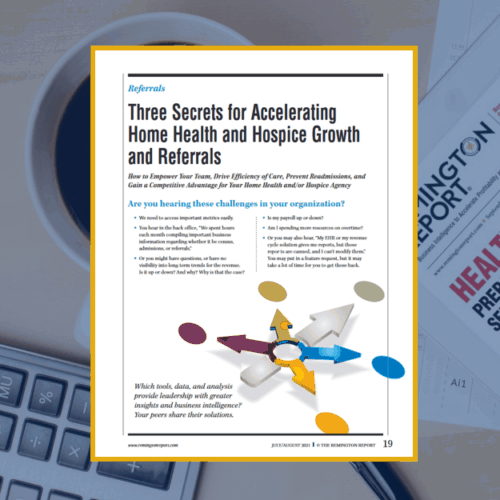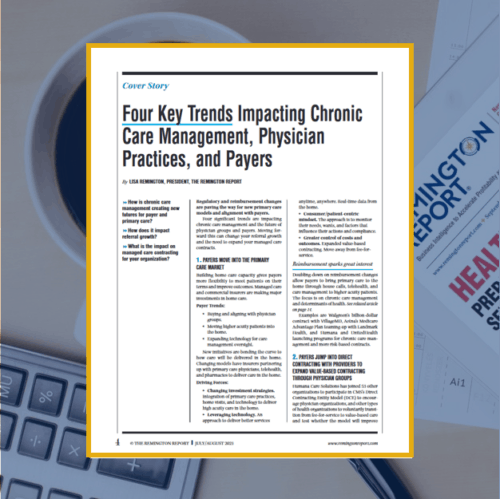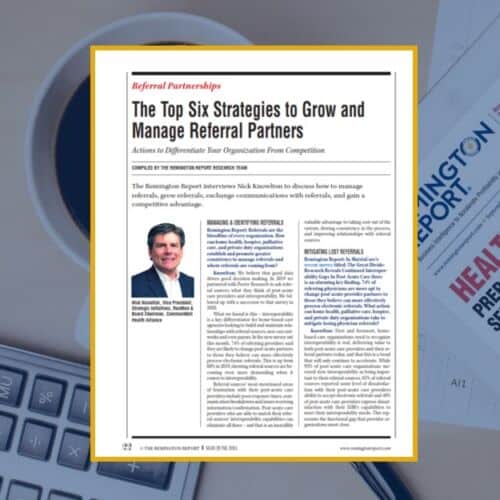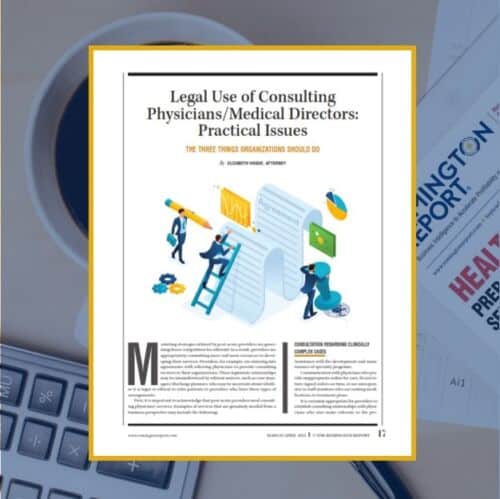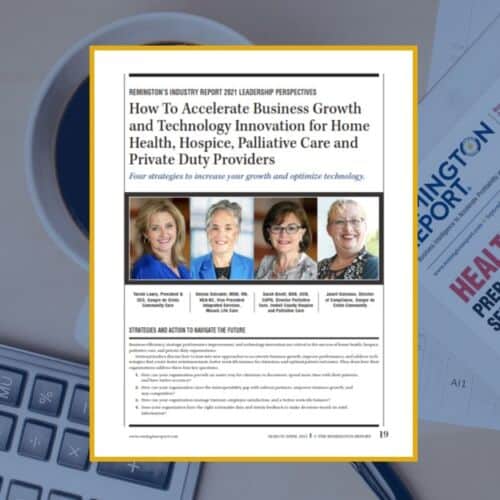-
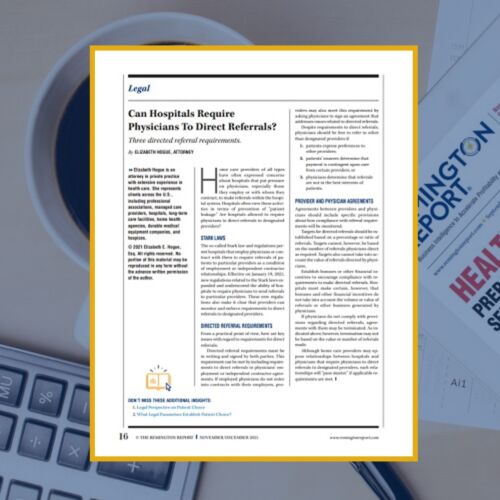 Effective on January 19, 2021, new regulations related to the Stark laws expanded and underscored the ability of hospitals to require physicians to send referrals to particular providers. These new regulations also make it clear that providers can monitor and enforce requirements to direct referrals to designated providers. This article is free to 1-Year Classic and 2-Year Premium subscribers.
Effective on January 19, 2021, new regulations related to the Stark laws expanded and underscored the ability of hospitals to require physicians to send referrals to particular providers. These new regulations also make it clear that providers can monitor and enforce requirements to direct referrals to designated providers. This article is free to 1-Year Classic and 2-Year Premium subscribers. -
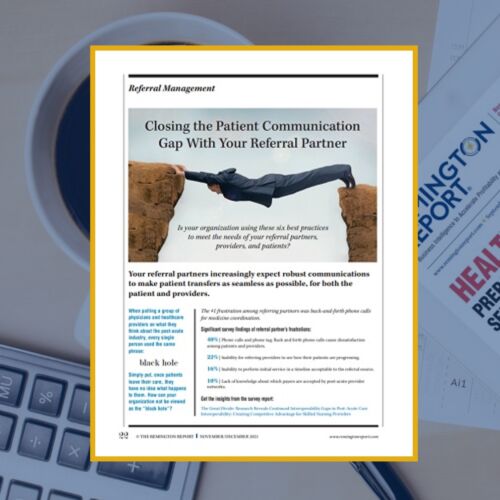 Across the board, we see from referral sources and other care providers alike that they really feel as if they’re part of the care team now instead of the end of the line where a patient goes when they get out of the hospital. Your peers share their thoughts and solutions. This article is free to 1-Year Classic and 2-Year Premium subscribers.
Across the board, we see from referral sources and other care providers alike that they really feel as if they’re part of the care team now instead of the end of the line where a patient goes when they get out of the hospital. Your peers share their thoughts and solutions. This article is free to 1-Year Classic and 2-Year Premium subscribers. -
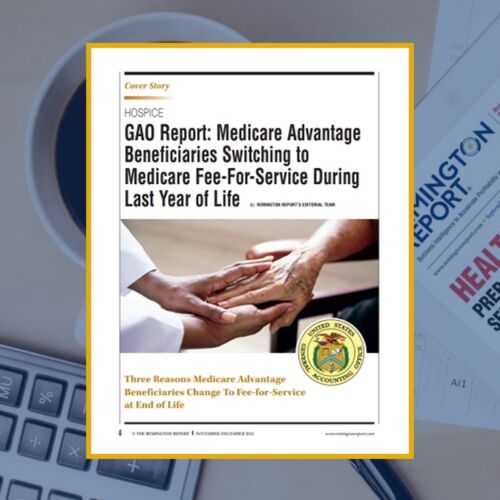 Medicare Advantage beneficiaries are switching to Medicare Fee-for-Service during their last year of life according to a Government Accountability Office study. The federal government would have saved $912 million during 2016 and 2017 had fewer Medicare Advantage enrollees opted into traditional Medicare during their last year of life, the GAO estimates. This article is free to 1-Year Classic and 2-Year Premium subscribers.
Medicare Advantage beneficiaries are switching to Medicare Fee-for-Service during their last year of life according to a Government Accountability Office study. The federal government would have saved $912 million during 2016 and 2017 had fewer Medicare Advantage enrollees opted into traditional Medicare during their last year of life, the GAO estimates. This article is free to 1-Year Classic and 2-Year Premium subscribers. -
 In this new normal, it’s important to understand how your referral sources work, what they are sending to you versus the competition, how to deepen relationships with these sources, and what differentiates you as a provider in the marketplace. This article is free to 1-Year Classic and 2-Year Premium subscribers.
In this new normal, it’s important to understand how your referral sources work, what they are sending to you versus the competition, how to deepen relationships with these sources, and what differentiates you as a provider in the marketplace. This article is free to 1-Year Classic and 2-Year Premium subscribers. -
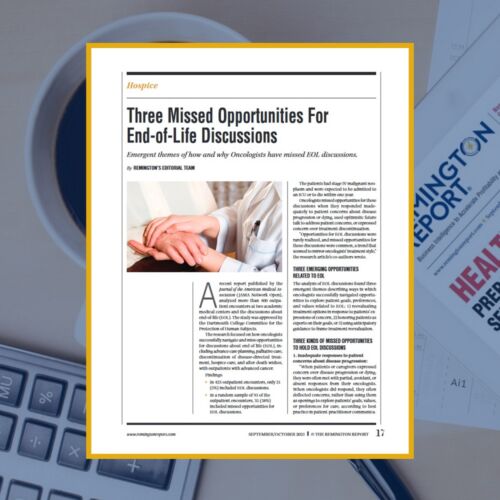 Recent research discusses the missed opportunities for discussions about end-of-life, including advance care planning, palliative care, discontinuation of disease-directed treatment, hospice care, and after-death wishes, with outpatients with advanced cancer. This article is free to 1-Year Classic and 2-Year Premium subscribers.
Recent research discusses the missed opportunities for discussions about end-of-life, including advance care planning, palliative care, discontinuation of disease-directed treatment, hospice care, and after-death wishes, with outpatients with advanced cancer. This article is free to 1-Year Classic and 2-Year Premium subscribers. -
 Your referral partners increasingly expect robust communications to make patient transfers as seamless as possible, for both the patient and providers. They will have to make a choice. Ultimately, they will look for relationships with organizations that are easy to work with and that can deliver proven quality care. We provide insights and strategies from high-performing organizations. This article is free to 1-Year Classic and 2-Year Premium subscribers.
Your referral partners increasingly expect robust communications to make patient transfers as seamless as possible, for both the patient and providers. They will have to make a choice. Ultimately, they will look for relationships with organizations that are easy to work with and that can deliver proven quality care. We provide insights and strategies from high-performing organizations. This article is free to 1-Year Classic and 2-Year Premium subscribers. -
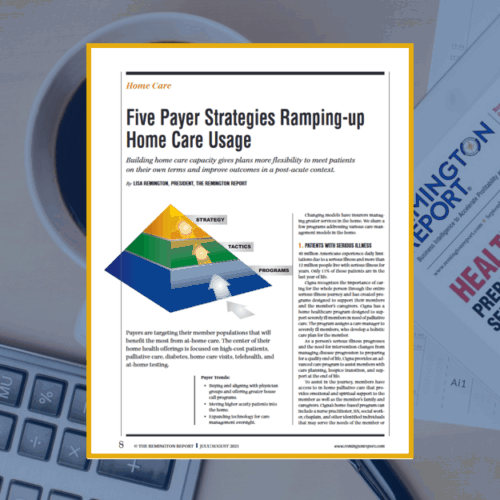 Payers are targeting their member populations that will benefit the most from at-home care. The center of their home health offerings is focused on high-cost patients, palliative care, diabetes, home care visits, telehealth, and at-home testing. This article is free to 1-Year Classic and 2-Year Premium subscribers.
Payers are targeting their member populations that will benefit the most from at-home care. The center of their home health offerings is focused on high-cost patients, palliative care, diabetes, home care visits, telehealth, and at-home testing. This article is free to 1-Year Classic and 2-Year Premium subscribers. -
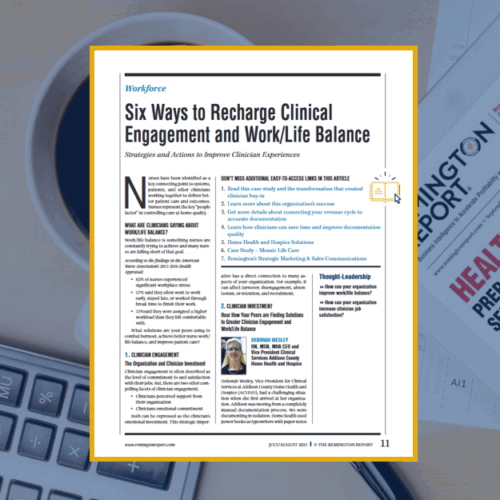 Strategies and actions to improve clinician experiences. Work/life balance is something nurses are constantly trying to achieve, and many nurses are falling short of that goal. What solutions are your peers using to combat burnout, achieve better nurse work/life balance, and improve patient care? This article is free to 1-Year Classic and 2-Year Premium subscribers.
Strategies and actions to improve clinician experiences. Work/life balance is something nurses are constantly trying to achieve, and many nurses are falling short of that goal. What solutions are your peers using to combat burnout, achieve better nurse work/life balance, and improve patient care? This article is free to 1-Year Classic and 2-Year Premium subscribers. -
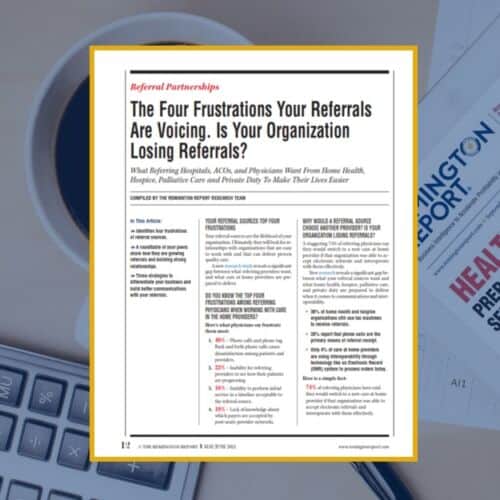 Your referral sources are the lifeblood of your organization. Ultimately, they will look for relationships with organizations that are easy to work with and that can deliver proven quality care. A new research report reveals the four frustrations felt by your referral sources. A roundtable of your peers’ weigh-in with solutions. This article is free to 1-Year Classic and 2-Year Premium subscribers.
Your referral sources are the lifeblood of your organization. Ultimately, they will look for relationships with organizations that are easy to work with and that can deliver proven quality care. A new research report reveals the four frustrations felt by your referral sources. A roundtable of your peers’ weigh-in with solutions. This article is free to 1-Year Classic and 2-Year Premium subscribers. -
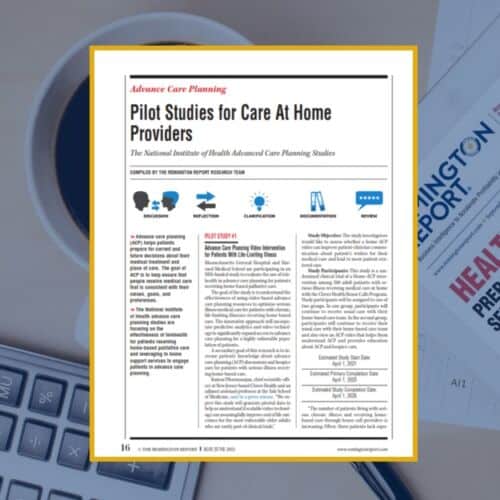 The National Institute of Health advance care planning studies are focusing on the effectiveness of telehealth for patients receiving home-based palliative care and leveraging in home support services to engage patients in advance care planning. Learn more about the pilot studies supporting this research. This article is free to 1-Year Classic and 2-Year Premium subscribers.
The National Institute of Health advance care planning studies are focusing on the effectiveness of telehealth for patients receiving home-based palliative care and leveraging in home support services to engage patients in advance care planning. Learn more about the pilot studies supporting this research. This article is free to 1-Year Classic and 2-Year Premium subscribers. -
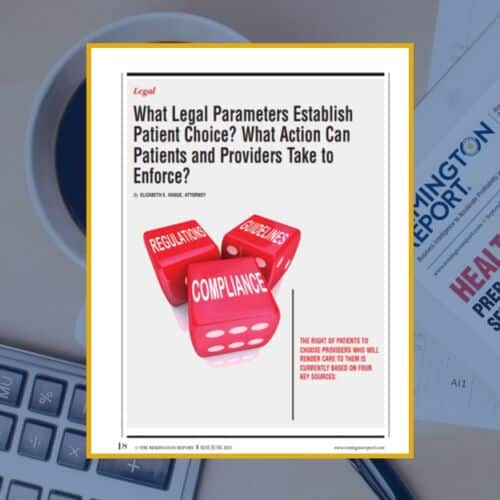 The right of patients to choose providers has generated considerable conflict within the provider community. In this article, learn the four key legal sources supporting patient choice and actions your organizations and patients can take to have them enforced. This article is free to 1-Year Classic and 2-Year Premium subscribers.
The right of patients to choose providers has generated considerable conflict within the provider community. In this article, learn the four key legal sources supporting patient choice and actions your organizations and patients can take to have them enforced. This article is free to 1-Year Classic and 2-Year Premium subscribers. -
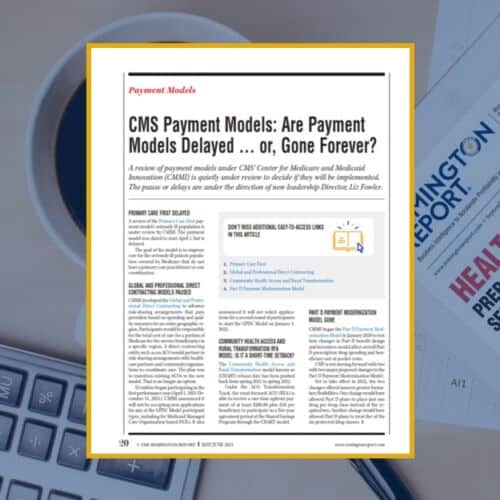 A review of payment models under CMS’ Center for Medicare and Medicaid Innovation (CMMI) is quietly under review to decide if they will be implemented. Many of these models were popular with care at home providers. We provide insight into each of these payment models. This article is free to 1-Year Classic and 2-Year Premium subscribers.
A review of payment models under CMS’ Center for Medicare and Medicaid Innovation (CMMI) is quietly under review to decide if they will be implemented. Many of these models were popular with care at home providers. We provide insight into each of these payment models. This article is free to 1-Year Classic and 2-Year Premium subscribers. -
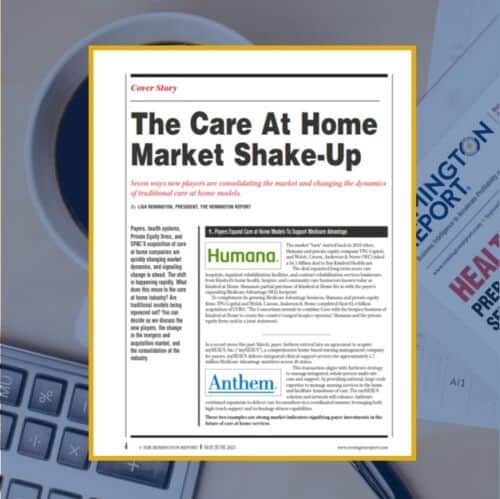 Payers, health systems, Private Equity firms, and SPAC’S acquisition of care at home companies are quickly changing market dynamics, and signaling change is ahead. This is a must-read to understand trends and insights reshaping the future. This article is free to 1-Year Classic and 2-Year Premium subscribers.
Payers, health systems, Private Equity firms, and SPAC’S acquisition of care at home companies are quickly changing market dynamics, and signaling change is ahead. This is a must-read to understand trends and insights reshaping the future. This article is free to 1-Year Classic and 2-Year Premium subscribers. -
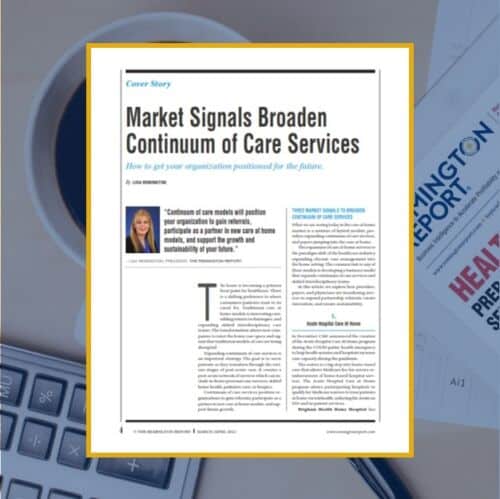 Expanding continuum of care services is an important strategy for future market positioning. We explore how providers, payers, and physicians are broadening services to expand partnership referrals, create innovation, and ensure sustainability. This article is free to 1-Year Classic and 2-Year Premium subscribers.
Expanding continuum of care services is an important strategy for future market positioning. We explore how providers, payers, and physicians are broadening services to expand partnership referrals, create innovation, and ensure sustainability. This article is free to 1-Year Classic and 2-Year Premium subscribers. -
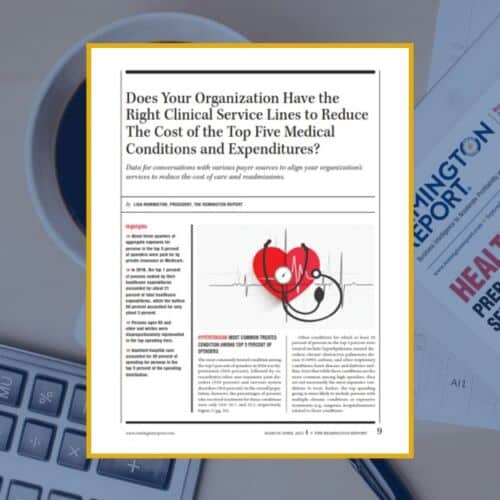 New information will help your organization better align clinical services to reduce the cost of the highest medical conditions and their expenditures. The data can be used in conversations with various payer sources to align your organization’s services to reduce the cost of care and readmissions. This article is free to 1-Year Classic and 2-Year Premium subscribers.
New information will help your organization better align clinical services to reduce the cost of the highest medical conditions and their expenditures. The data can be used in conversations with various payer sources to align your organization’s services to reduce the cost of care and readmissions. This article is free to 1-Year Classic and 2-Year Premium subscribers. -
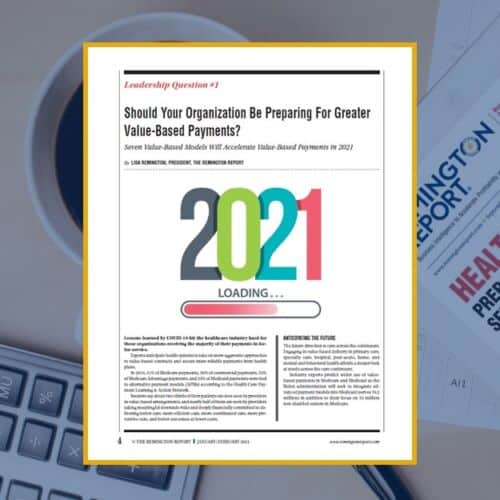 Beginning in 2021, several value-based payment models will begin the shift from fee-for-service to value-based. Earmark this as the transformation of payment reform for care at home providers and how they will be paid in the future. This article is free to 1-Year Classic and 2-Year Premium subscribers.
Beginning in 2021, several value-based payment models will begin the shift from fee-for-service to value-based. Earmark this as the transformation of payment reform for care at home providers and how they will be paid in the future. This article is free to 1-Year Classic and 2-Year Premium subscribers. -
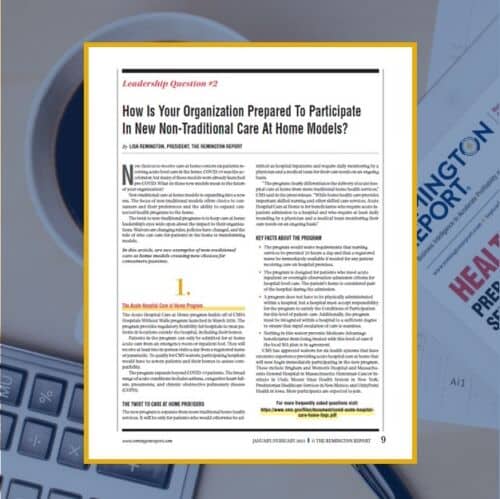 New choices to receive care at home centers on patients receiving acute level care in the home. Non-traditional care at home models is expanding into a new era. The twist to non-traditional programs is to keep care at home leadership?s eyes wide open about the impact to their organizations. Waivers are changing rules, policies have changed, and the role of who can care for patients in the home is transforming models. This article is free to 1-Year Classic and 2-Year Premium subscribers.
New choices to receive care at home centers on patients receiving acute level care in the home. Non-traditional care at home models is expanding into a new era. The twist to non-traditional programs is to keep care at home leadership?s eyes wide open about the impact to their organizations. Waivers are changing rules, policies have changed, and the role of who can care for patients in the home is transforming models. This article is free to 1-Year Classic and 2-Year Premium subscribers. -
 The invisible technology boundaries expand the rules of who can offer care in the home, how they will be paid, and it creates a less restrictive policy environment to deliver care at home. The opportunity to reshape care delivery and create a more efficient and cost-effective healthcare system is achievable because of the acceleration and adoption of technology. This article is free to 1-Year Classic and 2-Year Premium subscribers.
The invisible technology boundaries expand the rules of who can offer care in the home, how they will be paid, and it creates a less restrictive policy environment to deliver care at home. The opportunity to reshape care delivery and create a more efficient and cost-effective healthcare system is achievable because of the acceleration and adoption of technology. This article is free to 1-Year Classic and 2-Year Premium subscribers.
